Quynh Nguyen
Max Planck Institute for Informatics, Saarland University
TaDeR: A New Task Dependency Recommendation for Project Management Platform
May 12, 2022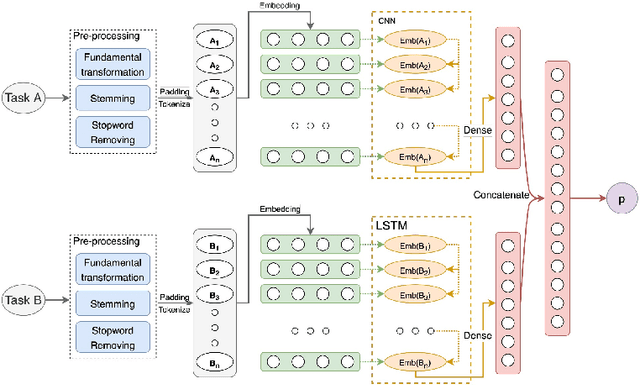
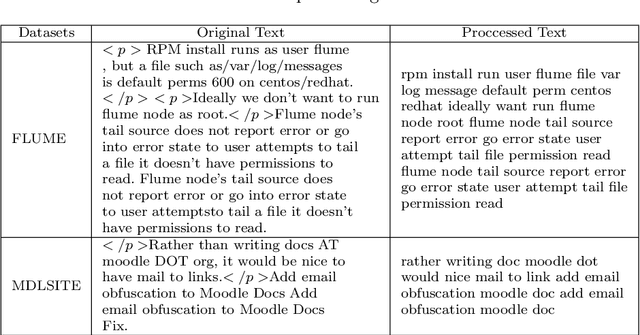


Abstract:Many startups and companies worldwide have been using project management software and tools to monitor, track and manage their projects. For software projects, the number of tasks from the beginning to the end is quite a large number that sometimes takes a lot of time and effort to search and link the current task to a group of previous ones for further references. This paper proposes an efficient task dependency recommendation algorithm to suggest tasks dependent on a given task that the user has just created. We present an efficient feature engineering step and construct a deep neural network to this aim. We performed extensive experiments on two different large projects (MDLSITE from moodle.org and FLUME from apache.org) to find the best features in 28 combinations of features and the best performance model using two embedding methods (GloVe and FastText). We consider three types of models (GRU, CNN, LSTM) using Accuracy@K, MRR@K, and Recall@K (where K = 1, 2, 3, and 5) and baseline models using traditional methods: TF-IDF with various matching score calculating such as cosine similarity, Euclidean distance, Manhattan distance, and Chebyshev distance. After many experiments, the GloVe Embedding and CNN model reached the best result in our dataset, so we chose this model as our proposed method. In addition, adding the time filter in the post-processing step can significantly improve the recommendation system's performance. The experimental results show that our proposed method can reach 0.2335 in Accuracy@1 and MRR@1 and 0.2011 in Recall@1 of dataset FLUME. With the MDLSITE dataset, we obtained 0.1258 in Accuracy@1 and MRR@1 and 0.1141 in Recall@1. In the top 5, our model reached 0.3040 in Accuracy@5, 0.2563 MRR@5, and 0.2651 Recall@5 in FLUME. In the MDLSITE dataset, our model got 0.5270 Accuracy@5, 0.2689 MRR@5, and 0.2651 Recall@5.
On Connectivity of Solutions in Deep Learning: The Role of Over-parameterization and Feature Quality
Feb 18, 2021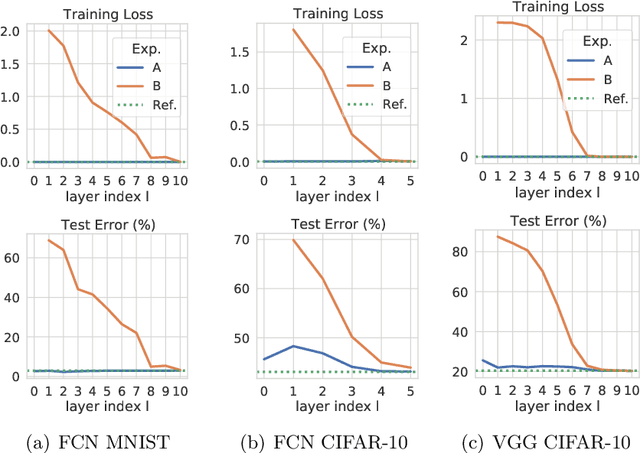
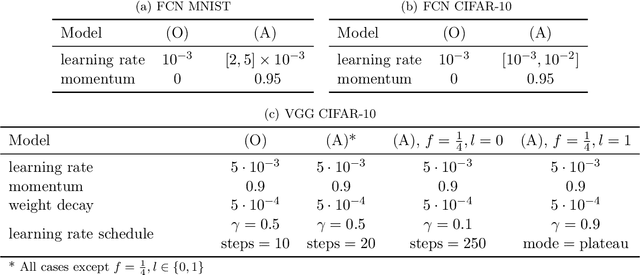
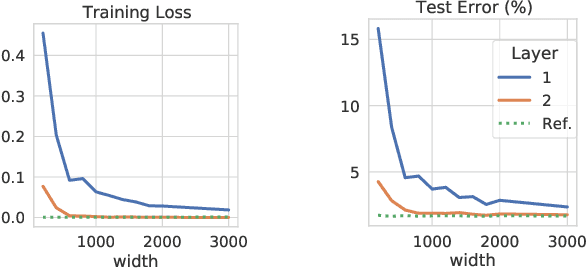
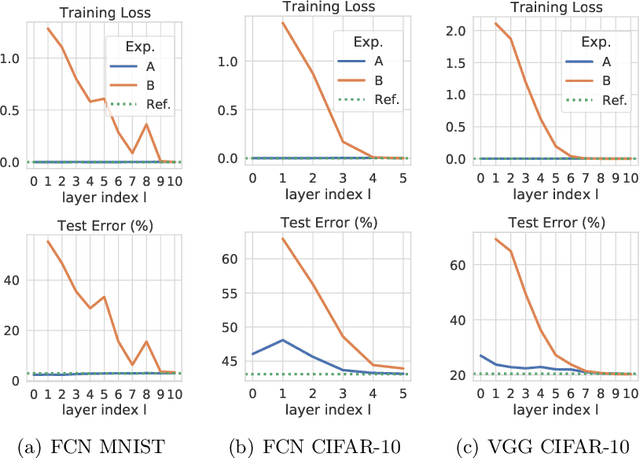
Abstract:It has been empirically observed that, in deep neural networks, the solutions found by stochastic gradient descent from different random initializations can be often connected by a path with low loss. Recent works have shed light on this intriguing phenomenon by assuming either the over-parameterization of the network or the dropout stability of the solutions. In this paper, we reconcile these two views and present a novel condition for ensuring the connectivity of two arbitrary points in parameter space. This condition is provably milder than dropout stability, and it provides a connection between the problem of finding low-loss paths and the memorization capacity of neural nets. This last point brings about a trade-off between the quality of features at each layer and the over-parameterization of the network. As an extreme example of this trade-off, we show that (i) if subsets of features at each layer are linearly separable, then almost no over-parameterization is needed, and (ii) under generic assumptions on the features at each layer, it suffices that the last two hidden layers have $\Omega(\sqrt{N})$ neurons, $N$ being the number of samples. Finally, we provide experimental evidence demonstrating that the presented condition is satisfied in practical settings even when dropout stability does not hold.
On the Proof of Global Convergence of Gradient Descent for Deep ReLU Networks with Linear Widths
Jan 24, 2021Abstract:This paper studies the global convergence of gradient descent for deep ReLU networks under the square loss. For this setting, the current state-of-the-art results show that gradient descent converges to a global optimum if the widths of all the hidden layers scale at least as $\Omega(N^8)$ ($N$ being the number of training samples). In this paper, we discuss a simple proof framework which allows us to improve the existing over-parameterization condition to linear, quadratic and cubic widths (depending on the type of initialization scheme and/or the depth of the network).
A Fully Rigorous Proof of the Derivation of Xavier and He's Initialization for Deep ReLU Networks
Jan 21, 2021Abstract:A fully rigorous proof of the derivation of Xavier/He's initialization for ReLU nets is given.
A Note on Connectivity of Sublevel Sets in Deep Learning
Jan 21, 2021Abstract:It is shown that for deep neural networks, a single wide layer of width $N+1$ ($N$ being the number of training samples) suffices to prove the connectivity of sublevel sets of the training loss function. In the two-layer setting, the same property may not hold even if one has just one neuron less (i.e. width $N$ can lead to disconnected sublevel sets).
Tight Bounds on the Smallest Eigenvalue of the Neural Tangent Kernel for Deep ReLU Networks
Dec 23, 2020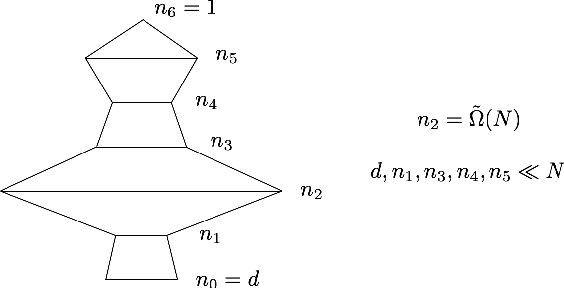

Abstract:A recent line of work has analyzed the theoretical properties of deep neural networks via the Neural Tangent Kernel (NTK). In particular, the smallest eigenvalue of the NTK has been related to memorization capacity, convergence of gradient descent algorithms and generalization of deep nets. However, existing results either provide bounds in the two-layer setting or assume that the spectrum of the NTK is bounded away from 0 for multi-layer networks. In this paper, we provide tight bounds on the smallest eigenvalue of NTK matrices for deep ReLU networks, both in the limiting case of infinite widths and for finite widths. In the finite-width setting, the network architectures we consider are quite general: we require the existence of a wide layer with roughly order of $N$ neurons, $N$ being the number of data samples; and the scaling of the remaining widths is arbitrary (up to logarithmic factors). To obtain our results, we analyze various quantities of independent interest: we give lower bounds on the smallest singular value of feature matrices, and upper bounds on the Lipschitz constant of input-output feature maps.
Global Convergence of Deep Networks with One Wide Layer Followed by Pyramidal Topology
Feb 18, 2020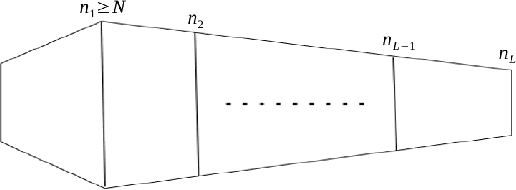

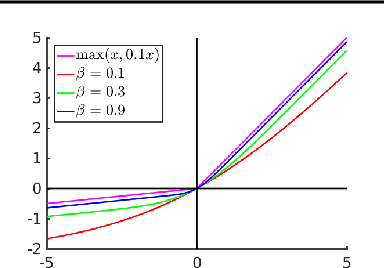
Abstract:A recent line of research has provided convergence guarantees for gradient descent algorithms in the excessive over-parameterization regime where the widths of all the hidden layers are required to be polynomially large in the number of training samples. However, the widths of practical deep networks are often only large in the first layer(s) and then start to decrease towards the output layer. This raises an interesting open question whether similar results also hold under this empirically relevant setting. Existing theoretical insights suggest that the loss surface of this class of networks is well-behaved, but these results usually do not provide direct algorithmic guarantees for optimization. In this paper, we close the gap by showing that one wide layer followed by pyramidal deep network topology suffices for gradient descent to find a global minimum with a geometric rate. Our proof is based on a weak form of Polyak-Lojasiewicz inequality which holds for deep pyramidal networks in the manifold of full-rank weight matrices.
On Connected Sublevel Sets in Deep Learning
Jan 22, 2019
Abstract:We study sublevel sets of the loss function in training deep neural networks. For linearly independent data, we prove that every sublevel set of the loss is connected and unbounded. We then apply this result to prove similar properties on the loss surface of deep over-parameterized neural nets with piecewise linear activation functions.
On the loss landscape of a class of deep neural networks with no bad local valleys
Sep 27, 2018

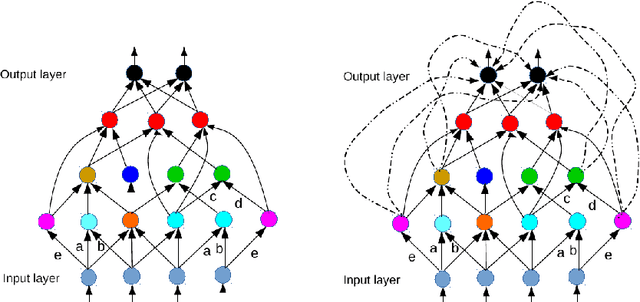
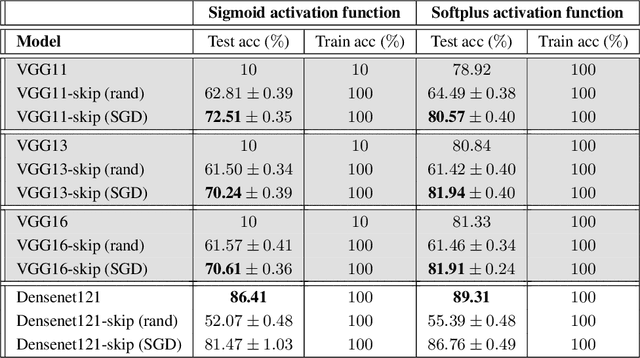
Abstract:We identify a class of over-parameterized deep neural networks with standard activation functions and cross-entropy loss which provably have no bad local valley, in the sense that from any point in parameter space there exists a continuous path on which the cross-entropy loss is non-increasing and gets arbitrarily close to zero. This implies that these networks have no sub-optimal strict local minima.
Neural Networks Should Be Wide Enough to Learn Disconnected Decision Regions
Jun 08, 2018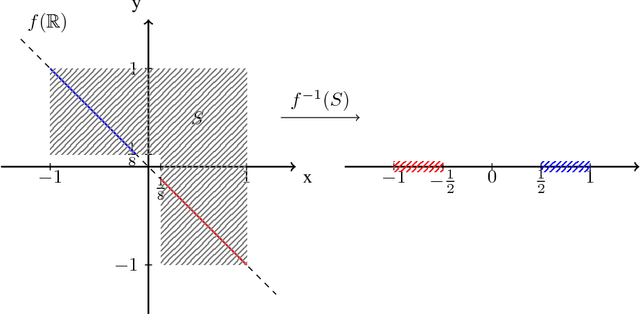
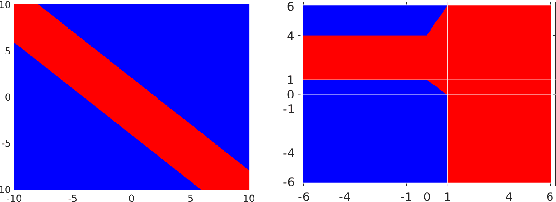
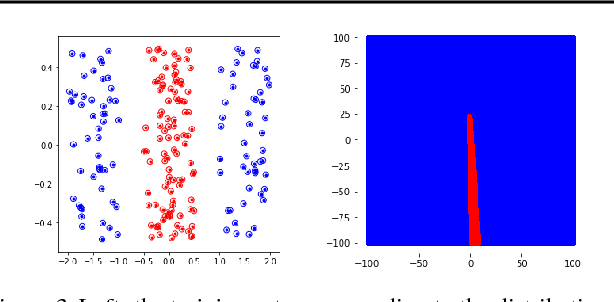

Abstract:In the recent literature the important role of depth in deep learning has been emphasized. In this paper we argue that sufficient width of a feedforward network is equally important by answering the simple question under which conditions the decision regions of a neural network are connected. It turns out that for a class of activation functions including leaky ReLU, neural networks having a pyramidal structure, that is no layer has more hidden units than the input dimension, produce necessarily connected decision regions. This implies that a sufficiently wide hidden layer is necessary to guarantee that the network can produce disconnected decision regions. We discuss the implications of this result for the construction of neural networks, in particular the relation to the problem of adversarial manipulation of classifiers.
 Add to Chrome
Add to Chrome Add to Firefox
Add to Firefox Add to Edge
Add to Edge